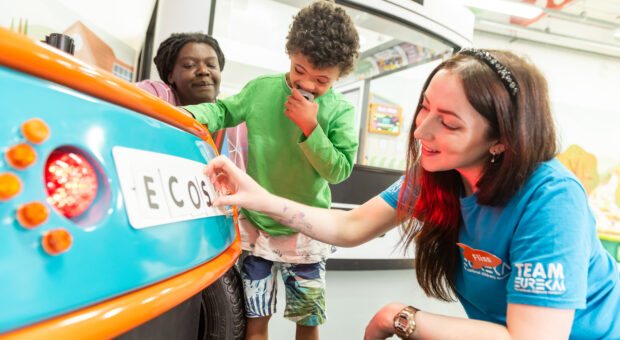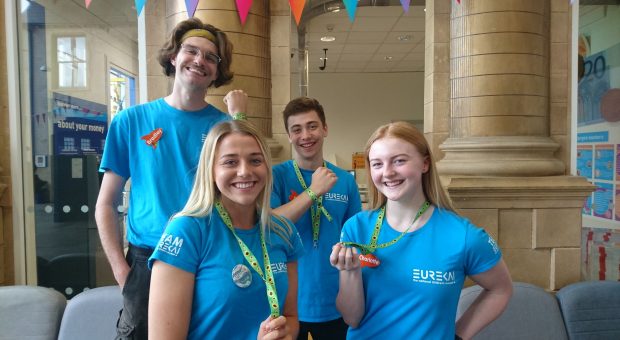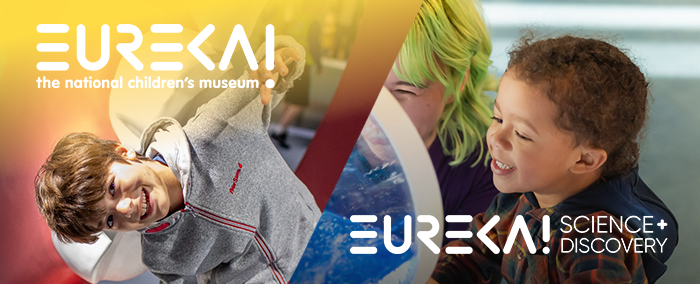And of course, while you’re playing together you’re listening, taking turns, developing attention skills, sharing ideas and collaborating – in short, developing social skills which will underpin your experiences in the adult world.
Sounds like fun doesn’t it? But playing with others doesn’t always come easily to children with autism.
For some children on the autistic spectrum, their play style is predominantly solitary and can seem purposeless to the casual observer, such as repeatedly arranging toy cars in rows rather than acting out an imaginary car chase.
Children with autism can be oblivious to others, find social engagement difficult, and pretend play unfathomable. And because playing alongside others doesn’t necessarily come naturally to such children, they can find themselves withdrawing even further.
They often prefer to play alone, or “in parallel”, where they are side-by-side with another child in an activity but not actually sharing the experience, e.g. playing separate video games. They may find it easier to play with others if the game has clear rules such as board games, but can become upset if those rules are bent or broken, e.g. allowing someone to join in late. This inflexible approach to play means that autistic children can find themselves more isolated as adolescents and adults.
Which is where LEGO comes in…
LEGO translates from the Danish as “playing well”, and as a toy with limitless capacity for both learning and enjoyment, it’s aptly named. LEGO clubs are springing up all over the UK and they’re especially popular with children with autism.
Here are a few reasons why LEGO is intrinsically autism-friendly:
- It’s a systematic tool with in-built creativity; the ways in which the bricks fit together are limited, yet the final results are infinite
- Manipulating the bricks is great for building fine motor skills
- Kits come with step-by-step instructions which appeal to the logical thinker
The benefits of LEGO for children with autism are even greater when a structured approach is applied, as in LEGO-based therapy developed by Daniel LeGoff in 2004.
Participants are led by a trained facilitator through a 6-8 week therapy programme. LEGO building rules are explained – that you must build collaboratively, that you ask for help, or to borrow something. Children are assigned roles such as Engineer, Builder, Supplier and Director. Each role has specific responsibilities and are rotated throughout the programme.
Within those roles, children learn to listen, communicate, negotiate and collaborate with each other, developing the social and play skills that come more naturally to their non-autistic peers. It’s the children’s shared love of LEGO which motivates them to persevere. Evidence shows that these skills become generalised so that children are less isolated outside the classroom, improving self-esteem, confidence and emotional health and wellbeing.
You don’t have to join a structured programme to reap the benefits though. It’s increasingly recognised that LEGO is just as popular with big kids too and family events and adult-only nights are becoming more widespread. Let’s face it, LEGO is mega cool, so it’s only fair for the whole family to get involved.
We’re rounding off Autism Awareness Week by hosting clubs for children with autism, run by local LEGO lovers Bricks4kidz, and thanks to funding from Calderdale’s Short Breaks Programme. They’re all fully booked – sorry! – but we’ll be able to talk first-hand about the benefits of LEGO, plus we’re looking forward to sharing videos and snaps from the day.
In the meantime, grab those assorted plastic bricks, get creative, and explore the ultimate autism-friendly toy this #AutismAwarenessWeek!



 By: Jenny Goodall
By: Jenny Goodall

